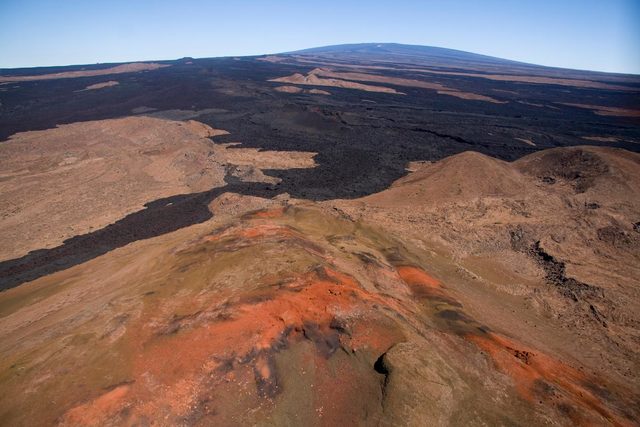The alert level for Mauna Loa has been elevated to an advisory as seismic activity remains above normal.
While the volcano is showing signs of unrest, the Hawaiian Volcano Observatory said Thursday the change does not mean an eruption is imminent or certain.
Seismic stations have recorded increased levels of shallow, small-magnitude earthquakes for the past year. Those temblors are located under the summit, upper Southwest Rift Zone and the mountain’s west flank, HVO said.
An advisory status is issued when one more volcano monitoring parameters are above background levels.
“It’s possible that the increased level of activity at Mauna Loa could continue for many months, or years, without leading to an eruption,” said Tina Neal, HVO’s scientist-in-charge, in a press release. “It is also possible that the current unrest could be a precursor to the next eruption of Mauna Loa. But at this early sate, we cannot determine precisely which possibility is more likely.”
Mauna Loa’s last eruption began March 25, 1984, and lasted just more than three weeks. It was preceded by up to three years of increased earthquake activity.
In contrast to the pre-1984 activity, the most recent earthquake activity remains comparatively low.
“The alert level change at Mauna Loa reminds us that it is an active volcano that will erupt again someday, so we should be prepared,” said HVO geologist Frank Trusdell in a press release.
HVO has posted on its website “Frequently Asked Questions about Mauna Loa” (http://hvo.wr.usgs.gov/maunaloa/FAQ_Maunaloa/). Current monitoring data for Mauna Loa is also posted on the HVO website at http://hvo.wr.usgs.gov/maunaloa/current/currentmonitoring.php.
For more information about Mauna Loa, other active Hawaiian volcanoes, and recent earthquakes in Hawaii, visit the HVO website (http://hvo.wr.usgs.gov) or email askHVO@usgs.gov.



